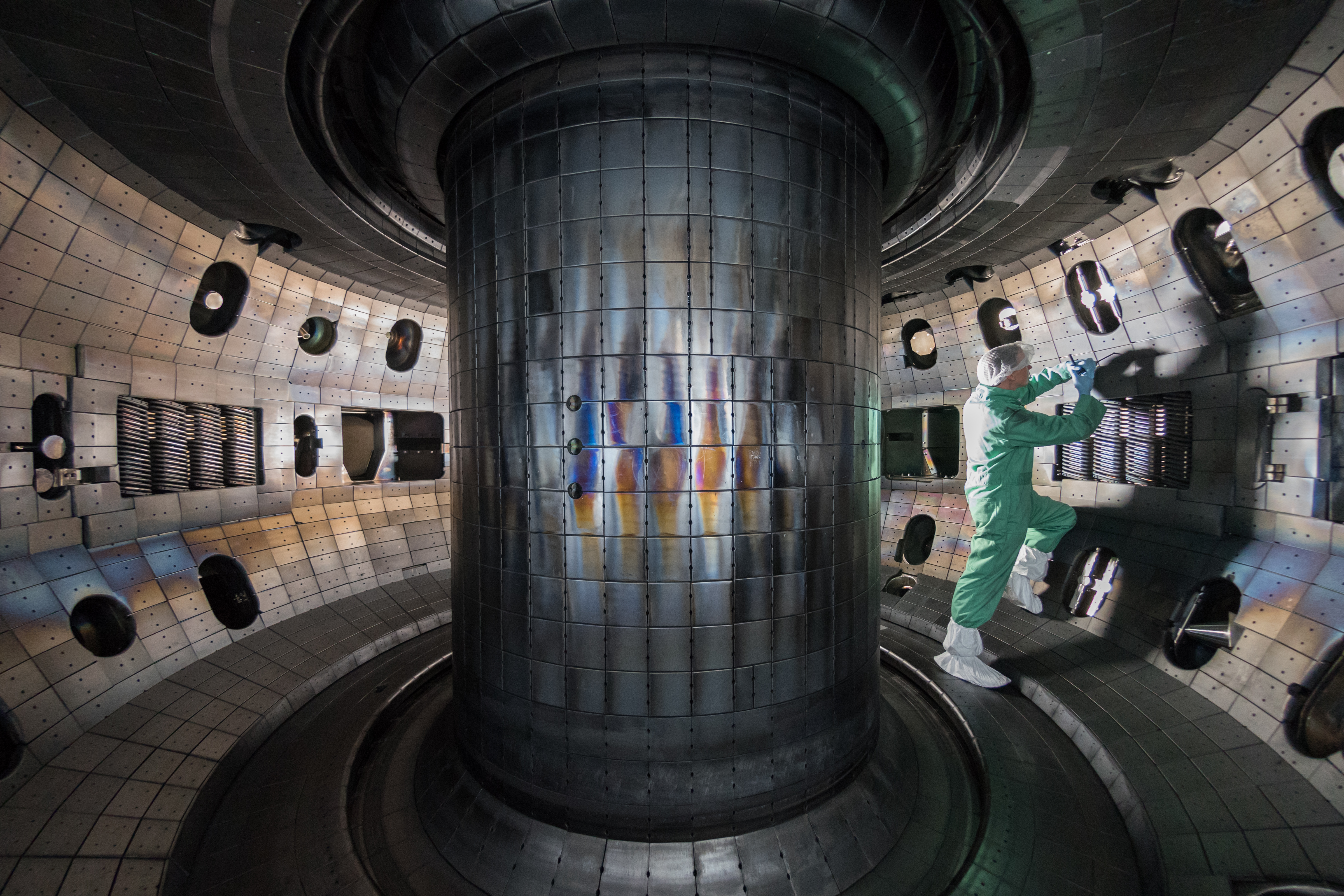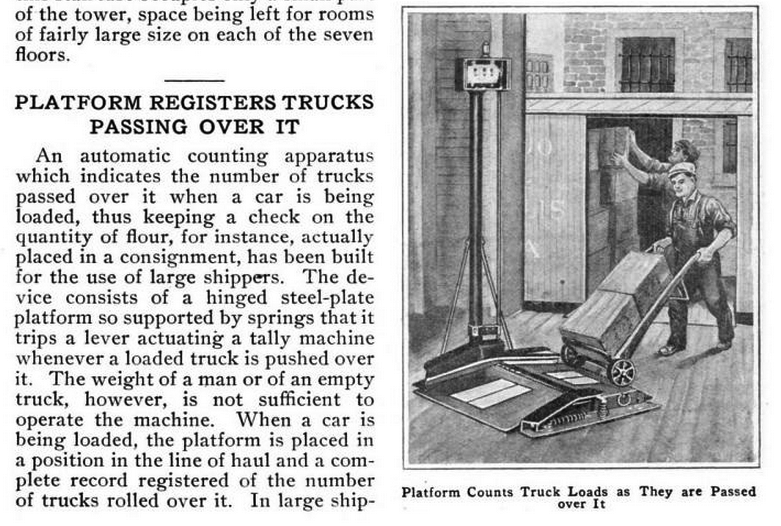|
Alcator
Alcator C-Mod was a tokamak (a type of magnetically confined fusion device) that operated between 1991 and 2016 at the Massachusetts Institute of Technology (MIT) Plasma Science and Fusion Center (PSFC). Notable for its high toroidal magnetic field (of up to 8 Tesla), Alcator C-Mod holds the world record for volume averaged plasma pressure in a magnetically confined fusion device. Until its shutdown in 2016, it was one of the major fusion research facilities in the United States. Alcator C-Mod was the third of the Alcator (''Alto Campo Toro'', High Field Torus) tokamak series, following Alcator A (1973–1979) and Alcator C (1978–1987). It was the largest fusion reactor operated by any university and was an integral part of the larger Plasma Science and Fusion Center. History Alcator A In the late 1960s, magnetic-confinement fusion research at MIT was carried out on small-scale "table-top" experiments at the Research Laboratory for Electronics and the Francis Bitter ... [...More Info...] [...Related Items...] OR: [Wikipedia] [Google] [Baidu] |
Tokamak
A tokamak (; russian: токамáк; otk, 𐱃𐰸𐰢𐰴, Toḳamaḳ) is a device which uses a powerful magnetic field to confine plasma in the shape of a torus. The tokamak is one of several types of magnetic confinement devices being developed to produce controlled thermonuclear fusion power. , it was the leading candidate for a practical fusion reactor. Tokamaks were initially conceptualized in the 1950s by Soviet physicists Igor Tamm and Andrei Sakharov, inspired by a letter by Oleg Lavrentiev. The first working tokamak was attributed to the work of Natan Yavlinsky on the T-1 in 1958. It had been demonstrated that a stable plasma equilibrium requires magnetic field lines that wind around the torus in a helix. Devices like the z-pinch and stellarator had attempted this, but demonstrated serious instabilities. It was the development of the concept now known as the safety factor (labelled ''q'' in mathematical notation) that guided tokamak development; by arra ... [...More Info...] [...Related Items...] OR: [Wikipedia] [Google] [Baidu] |
MIT Plasma Science And Fusion Center
The Plasma Science and Fusion Center (PSFC) at the Massachusetts Institute of Technology (MIT) is a university research center for the study of plasmas, fusion science and technology. It was originally founded in 1976 as the Plasma Fusion Center (PFC) at the request and with the collaboration of the U.S. Department of Energy. The original grant was for construction and operation of a tokamak reactor Alcator A, the first in a series of small, high-field tokamaks, followed by Alcator C (1978) and Alcator C-Mod (1993). MIT's most recent tokamak, Alcator C-Mod, ran from 1993 to 2016. In 2016, the project pressure reached 2.05 atmospheres—a 15 percent jump over the previous record of 1.77 atmospheres with a plasma temperature of 35 million degrees C, sustaining fusion for 2 seconds, yielding 600 trillion fusion reactions. The run involved a 5.7 tesla magnetic field. It reached this milestone on its final day of operation. In 2018, the PSFC began developing a conceptual design ... [...More Info...] [...Related Items...] OR: [Wikipedia] [Google] [Baidu] |
IGNITOR
Ignitor is the Italian name for a planned tokamak device, developed by ENEA. , the device has not been constructed. Started in 1977 by Prof. Bruno Coppi at MIT, Ignitor based on the 1970s Alcator machine at MIT which pioneered the high magnetic field approach to plasma magnetic confinement, continued with the Alcator C/C-Mod at MIT and the FT/FTU series of experiments. It was initially proposed to be built "in the area of the former Caorso nuclear power station". The currently intended location is at Troitsk near Moscow. Ignitor is designed to produce approximately 100 MW of fusion power despite its relatively small size. For comparison, the intended weight is 500 metric tons, while the ITER international reactor, expected to be the first tokamak to reach scientific breakeven, is some 19,000 tons. 2010 At a meeting with the scientific attachés of the European embassies in Moscow in early February 2010 Mikhail Kovalchuk, Director of the Kurchatov Institute, announced tha ... [...More Info...] [...Related Items...] OR: [Wikipedia] [Google] [Baidu] |
Bruno Coppi
Bruno Coppi (born 19 November 1935 in Gonzaga, Lombardy, Italy) is an Italian-American physicist specializing in plasma physics. In 1959, Coppi attained an Italian doctoral degree at Polytechnic University of Milan and was subsequently a docent and research scientist at the Polytechnic Institute and the University of Milan. In 1961, he was a scientist at the Princeton Plasma Physics Laboratory. From 1964 to 1967, he was an assistant professor at the University of California, San Diego, from 1967 to 1969 at the Institute for Advanced Study, and from 1968 professor at the Massachusetts Institute of Technology. In the 1980s, Coppi was a member of the science team in the Voyager 2 space probe. Coppi works on theoretical plasma physics, space plasmas and magnetic fusion. At MIT, he initiated the Alcator Program, which led to the Russian-American Ignitor program, that aims at building near Moscow a fusion reactor with Coppi as the principal investigator for the project. In addition, ... [...More Info...] [...Related Items...] OR: [Wikipedia] [Google] [Baidu] |
Massachusetts Institute Of Technology
The Massachusetts Institute of Technology (MIT) is a Private university, private Land-grant university, land-grant research university in Cambridge, Massachusetts. Established in 1861, MIT has played a key role in the development of modern technology and science, and is one of the most prestigious and highly ranked academic institutions in the world. Founded in response to the increasing Technological and industrial history of the United States, industrialization of the United States, MIT adopted a European History of European universities, polytechnic university model and stressed laboratory instruction in applied science and engineering. MIT is one of three private land grant universities in the United States, the others being Cornell University and Tuskegee University. The institute has an Campus of the Massachusetts Institute of Technology, urban campus that extends more than a mile (1.6 km) alongside the Charles River, and encompasses a number of major off-campus fa ... [...More Info...] [...Related Items...] OR: [Wikipedia] [Google] [Baidu] |
Energy Research And Development Administration
The United States Energy Research and Development Administration (ERDA) was a United States government organization formed from the split of the Atomic Energy Commission (AEC) in 1975. It assumed the functions of the AEC not assumed by the Nuclear Regulatory Commission. The agency was created as part of the Energy Reorganization Act of 1974, which was passed on October 11, 1974, in the wake of the 1973 oil crisis. The act split the Atomic Energy Commission into two new agencies: the Nuclear Regulatory Commission would regulate the commercial nuclear power industry, while the ERDA would manage the energy research and development, nuclear weapons, and naval reactors programs. The Energy Research and Development Administration was established on January 19, 1975. The first administrator was Robert Seamans, followed by Robert W. Fri. In 1977, ERDA was merged with the Federal Energy Administration to form the United States Department of Energy The United States Department of E ... [...More Info...] [...Related Items...] OR: [Wikipedia] [Google] [Baidu] |
Retronym
A retronym is a newer name for an existing thing that helps differentiate the original form/version from a more recent one. It is thus a word or phrase created to avoid confusion between older and newer types, whereas previously (before there were more than one type) no clarification was required. Advances in technology are often responsible for the coinage of retronyms. For example, the term "acoustic guitar" was coined with the advent of electric guitars; analog watches were renamed to distinguish them from digital watches once the latter were invented; and " push bike" was created to distinguish from motorbikes and motorized bicycles; finally "feature phones" were also coined behind smartphones. Etymology The term ''retronym'', a neologism composed of the classical compound, combining forms '' retro-'' (from Latin ''retro'', "before") + ''-nym'' (from Greek ''ónoma'', "name"), was coined by Frank Mankiewicz in 1980 and popularized by William Safire in ''The New York T ... [...More Info...] [...Related Items...] OR: [Wikipedia] [Google] [Baidu] |
United States Atomic Energy Commission
The United States Atomic Energy Commission (AEC) was an agency of the United States government established after World War II by U.S. Congress to foster and control the peacetime development of atomic science and technology. President Harry S. Truman signed the McMahon/Atomic Energy Act on August 1, 1946, transferring the control of atomic energy from military to civilian hands, effective on January 1, 1947. This shift gave the members of the AEC complete control of the plants, laboratories, equipment, and personnel assembled during the war to produce the atomic bomb. An increasing number of critics during the 1960s charged that the AEC's regulations were insufficiently rigorous in several important areas, including radiation protection standards, nuclear reactor safety, plant siting, and environmental protection. By 1974, the AEC's regulatory programs had come under such strong attack that the U.S. Congress decided to abolish the AEC. The AEC was abolished by the ... [...More Info...] [...Related Items...] OR: [Wikipedia] [Google] [Baidu] |
Lower Hybrid Oscillation
In plasma physics, a lower hybrid oscillation is a longitudinal oscillation of ions and electrons in a magnetized plasma. The direction of propagation must be very nearly perpendicular to the stationary magnetic field, within about radians. Otherwise the electrons can move along the field lines fast enough to shield the oscillations in potential. The frequency of oscillation is :\omega = \Omega_i\Omega_e)^+\omega_^, where Ωi is the ion cyclotron frequency, Ωe is the electron cyclotron frequency and ωpi is the ion plasma frequency. This is the lower hybrid frequency, so called because it is a "hybrid", or mixture, of two frequencies. There are also an upper hybrid frequency and upper hybrid oscillation. The lower hybrid oscillation is unusual in that the ion and electron masses play an equally important role. This mode is relatively unimportant in practice because the necessary precise orientation relative to the magnetic field is seldom achieved. Exceptions are the us ... [...More Info...] [...Related Items...] OR: [Wikipedia] [Google] [Baidu] |
Consolidated Edison
Consolidated Edison, Inc., commonly known as Con Edison (stylized as conEdison) or ConEd, is one of the largest investor-owned energy companies in the United States, with approximately $12 billion in annual revenues as of 2017, and over $62 billion in assets. The company provides a wide range of energy-related products and services to its customers through its subsidiaries: *Consolidated Edison Company of New York, Inc. (CECONY), a regulated utility providing electric and gas service in New York City and Westchester County, New York, and steam service in the borough of Manhattan; *Orange and Rockland Utilities, Inc., a regulated utility serving customers in a area in southeastern New York and northern New Jersey; *Con Edison Solutions, an energy services company; *Con Edison Energy, a wholesale energy services company; *Con Edison Development, a company that owns and operates renewable and energy infrastructure projects, and, *Con Edison Transmission, Inc., which invests ... [...More Info...] [...Related Items...] OR: [Wikipedia] [Google] [Baidu] |


.jpg)


